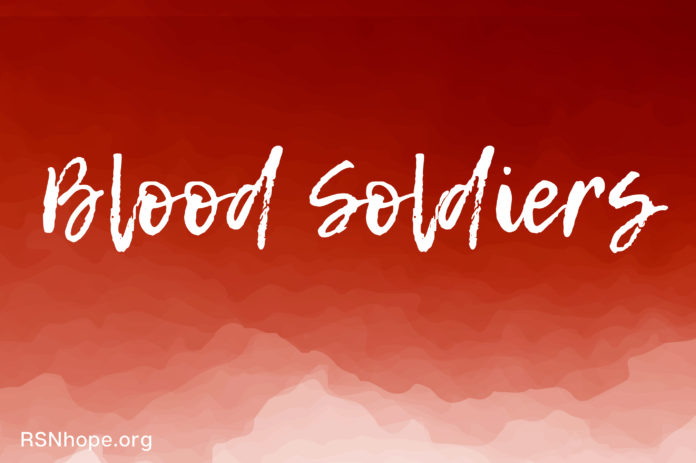Blood Soldiers
still
straight ahead
the shadows fall on darkened soldiers
as I turn out the light
I glance back to tell them goodnightcharge
nurse in charge
plotting the battle plans for the day
how long for their treatment
who needs attention mostblood
poisons reign
when the kidneys quit my soldiers come
to banish the poison
clean the blood—live another daylong
hours drag on
day turns into night—they keep coming
the patients needing care
needing the skill of my soldiers
I
cannot tire
the need is so great—lives to be saved
dialysis machines
the soldiers under my command
night
has fallen
the soldiers are ready for morning
the charge nurse is last out
I lock the door—goodnight soldiers
About the Poem (by the Author)
The poem I’ve written is inspired by the work of Marianne Moore. She made a new kind of verse, but she denied to all that she was a poet (Logan, 2004). Moore worked with words as her trade. What she wrote was called poetry, she said, because there was no other category in which to put it (Logan 2004). Marianne Moore’s poem, “The Fish” is written in syllabic verse, organized in five stanzas. The pattern for each stanza
is 1, 3, 9, 6, 8.
“dead
repeated
evidence has proved that it can live
on what can not revive
its youth. The seas grow old in it.” (Moore, 1924)
The poem concentrates on the number of syllables per line. Marianne Moore was one of the most famous “practitioner” of this mode of verse. I’ve attempted to write a poem about my work while imitating Moore’s style. I’ve learned that poets are often inspired by what they have experienced. I considered a number of subjects or topics for my poem and I found myself repeatedly returning to my profession as a charge nurse in an outpatient hemodialysis clinic 12-16 hours a day: scheduling, rearranging, planning, completing life sustaining treatments, all dependent on my “soldiers”–my 24 dialysis machines that fight off the blood poisons, thus saving the lives of the patients we serve.
Reference:
Logan, W. (Feb 2004). The Mystery of Marianne Moore, New Criterion, 22, 6, p 66.
(7).Retrieved September 22, 2008, from Genereal OneFile via Gale:
http://find.galegroup.com/ips/start.do?prodId=IPS
Article uploaded 1-31-2009
Web ID 217







